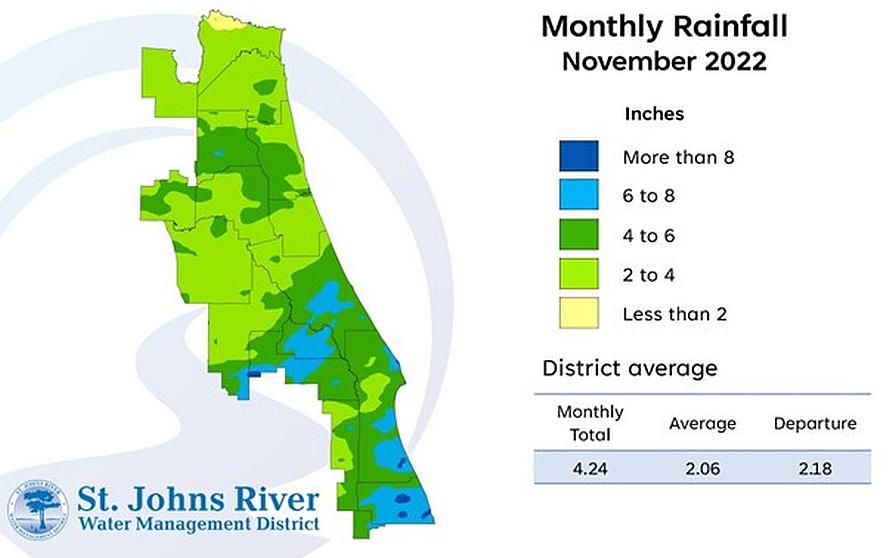Hurricane Nicole Keeps Dry Season on Hold in Florida
Even though the 2022 Atlantic hurricane season concluded with average activity on paper, Florida played host to two very destructive storms. Hurricane Ian delivered a major blow as a Category 4 system in late September, moving from southwest to northeast. Just 43 days later, Hurricane Nicole made landfall on Florida’s East Coast. Combined, both storms delivered a powerful one-two punch of prolific precipitation.
Hurricane Nicole’s pattern of heavy rainfall echoed that of Hurricane Ian’s and dropped above-average rainfall across most of Central and Northeast Florida, according to officials at the St. Johns River Water Management District.
Highlights from the district’s latest hydrological report include:
- Districtwide, November rainfall averaged 4.24 inches, which is 2.18 inches above the average for the month.
- Districtwide, the cumulative rainfall total for the past 12 months is 55.87 inches, which is 4.86 inches above the long-term average.
- The highest 12-month totals are in Seminole County receiving 72.5 inches of rain this year and Volusia, Orange, and Flagler counties, all exceeding 60 inches.

Groundwater levels are recording high (at the 90th percentile) across the 18-county district.
Crop loss assessments already underway in the wake of Hurricane Ian were interrupted by Nicole. Final numbers are yet to be released.
Florida’s dry season typically starts around mid-October, moving north to south. This year, the normal pattern is still out of whack — even as of mid-December. A vigorous cold front just made its way across the peninsula, ushering in heavy rain and storms.








